Research on Energetic Micro-Self-Destruction Devices with Fast Responses
Abstract
:1. Introduction
2. Model and Method
2.1. Design of Self-Destruction System
2.2. Preparation of the NCB
2.3. Electrical Explosion Test System
2.4. Output Capacity Analysis of the Copper Azide Explosive
3. Test and Result
3.1. Electric Explosion Performance of the NCB
3.2. Response Time and Damage Ability Testing of Self-Destruction Device
4. Conclusions
Author Contributions
Funding
Data Availability Statement
Conflicts of Interest
References
- Han, J.W.; Seol, M.L.; Choi, Y.K.; Meyyappan, M. Self-Destructible Fin Flip-Flop Actuated Channel Transistor. IEEE Electron Device Lett. 2016, 37, 130–133. [Google Scholar] [CrossRef]
- Tada, S.; Yamashita, Y.; Matsuda, K.; Nagata, M.; Sakiyama, K.; Miura, N. Design and concept proof of an inductive impulse self-destructor in sense-and-react countermeasure against physical attacks. Jpn. J. Phys. 2021, 60, SBBL01. [Google Scholar] [CrossRef]
- Sugawara, T.; Suzuki, D.; Saeki, M.; Shiozaki, M.; Fujino, T. On measurable side-channel leaks inside ASIC design primitives. J. Cryptogr. Eng. 2014, 4, 59–73. [Google Scholar] [CrossRef]
- Peeters, E.; Standaert, F.-X.; Quisquater, J.-J. Power and electromagnetic analysis: Improved model, consequences and comparisons. Integr. VLSI J. 2005, 40, 52–60. [Google Scholar] [CrossRef]
- Lenssen, K.M.H.; Jochemsem, R. Method and Device for Protection of an MRAM Device against Tampering. U.S. Patent US7712147, 5 May 2010. [Google Scholar]
- Yue, A.Z.; Kang, B.L.; Wenzhong, C.L.; Dongguang, D.L.; Zhihui, M. Study of ASIC selfdestruction technology based on MEMS initiator. In Proceedings of the IEEE 8th International Conference on Nano/Micro Engineered and Molecular Systems, Suzhou, China, 7−10 April 2013; pp. 851–854. [Google Scholar]
- DARPA, Vanishing Programmable Resources(VAPR) [EB/OL]. Available online: http://www.darpa.mil/program/vanishing-programmable-resources (accessed on 14 March 2022).
- Hwang, S.W.; Huang, X.; Seo, J.H.; Song, J.K.; Kim, S.; Hage-Ali, S.; Chung, H.J.; Tao, H.; Omenetto, F.G.; Ma, Z.; et al. Materials for bioresorbable radio frequency electronics. Adv. Mater. 2013, 25, 3526–3531. [Google Scholar] [CrossRef] [PubMed]
- Hwang, S.W.; Rogers, J.A. A physically transient form of silicon electronics. Science 2012, 337, 1640–1644. [Google Scholar] [CrossRef] [PubMed]
- Banerjee, N.; Xie, Y.; Rahman, M.M.; Kim, H.; Mastrangelo, C.H. From chips to dust: The MEMS shatter secure chip. In Proceedings of the 2014 IEEE 27th International Conference on Micro Electro Mechanical Systems (MEMS), San Francisco, CA, USA, 26–30 January 2014. [Google Scholar]
- Williams, M. Xerox PARC’s New Chip Will Self-Destruct in 10 Seconds. [EB/OL]. Available online: https://www.computerworld.com/article/2983014/xerox-parcs-new-chip-will-self-destruct-in-10-seconds.html (accessed on 10 September 2015).
- Yoon, J.; Lee, J.; Choi, B.; Lee, D.; Kim, D.H.; Kim, D.M.; Moon, D.I.; Lim, M.; Kim, S.; Choi, S.J. Flammable carbon nanotube transistors on a nitrocellulose paper substrate for transient electronics. Nano Res. 2017, 10, 87–96. [Google Scholar] [CrossRef]
- Ma, X.; Gu, S.; Li, Y.; Lu, J.; Yang, G.; Zhang, K. Additive-Free Energetic Film Based on Graphene Oxide and Nanoscale Energetic Coordination Polymer for Transient Microchip. Adv. Funct. Mater. 2021, 31, 2103199. [Google Scholar] [CrossRef]
- Sevely, F.; Wu, T.; de Sousa, F.S.F.; Seguier, L.; Brossa, V.; Charlot, S.; Esteve, A.; Rossi, C. Developing a highly responsive miniaturized security device based on a printed copper ammine energetic composite. Sens. Actuators A Phys. 2022, 346, 113838. [Google Scholar] [CrossRef]
- Pandey, S.S.; Mastrangelo, C.H. An Exothermal Energy Release Layer for Microchip Transience. In SENSORS; IEEE: New York, NY, USA. In SENSORS; IEEE: New York, NY, USA, 2013. [Google Scholar]
- Pandey, S.S.; Banerjee, N.; Xie, Y.; Mastrangelo, C.H. Self-Destructing Secured Microchips by On-Chip Triggered Energetic and Corrosive Attacks for Transient Electronics. Adv. Mater. Technol. 2018, 3, 1800044. [Google Scholar] [CrossRef]
- Fleck, T.J.; Ramachandran, R.; Murray, A.K.; Novotny, W.A.; Chiu, G.T.C.; Gunduz, I.E.; Son, S.F.; Rhoads, J.F. Controlled substrate destruction using nanothermite. Propellants Explos. Pyrotech. 2017, 42, 579–584. [Google Scholar] [CrossRef]
- Feng, H.; Lou, W.; He, B.; Lv, S.; Su, W. Design of information self-destruction module based on security control of energetic materials. Measurement 2022, 198, 111396. [Google Scholar] [CrossRef]
- Feng, H.; Lou, W.; He, B.; Lv, S.; Su, W. Information self-destruction module design based on micro thermoelectric power generation and energetic materials. ISA Trans. 2023, 132, 573–581. [Google Scholar] [CrossRef] [PubMed]
- Feng, H.; Lou, W.; He, B.; Lv, S.; Su, W. Research on Insurance Method for Energetic Materials on Information Self-Destruction Chips. Micromachines 2022, 13, 875. [Google Scholar] [CrossRef] [PubMed]
- Chu, E.; Zhang, F.; Zhang, R. Preliminary Discussion of New Concepts of the 4th Generation Pyrotechnics. Initiat. Pyrotech. 2018, 2018, 1–5. [Google Scholar] [CrossRef]
- Chu, E.-Y.; Zhang, F.; Chen, J.-H.; Wang, Y.-L.; Xue, Y.; Xie, R.-Z. Supplementary Discussion of Concepts of the 4th Generation Pyrotechnics. Initiat. Pyrotech. 2020, 1–4. [Google Scholar] [CrossRef]
- Yang, T.-L.; Shen, Y.; Dai, J.; Zheng, G.; Wang, C.; Ye, Y.; Shen, R. Fabrication and Characterization of a Ni-Cr@Al/CuO Insensitive Energetic Element. Chin. J. Energetic Mater. 2019, 27, 830–836. [Google Scholar]
- Shen, Y.; Xu, J.; Wang, C.; Yang, T.; Ye, Y.; Shen, R. Ignition characteristics of energetic nichrome bridge initiator based on Al/CuO reactive multilayer films under capacitor discharge and constant current conditions. Sens. Actuators A Phys. 2020, 313, 112200. [Google Scholar] [CrossRef]
- Zeng, Q.-X.; Jian, G.-Z.; Li, B. The fitted Parameters of JWL Qquation of State for Copper Azide. Initiat. Pyrotech. 2014, 6, 28–31. [Google Scholar]
- Zhao, X.; Bai, C.; Yao, J.; Sun, B. Parameters Calculation of JWL EOS of FAE Detonation Products. Binggong Xuebao/Acta Armamentarii 2020, 41, 1921–1929. [Google Scholar]

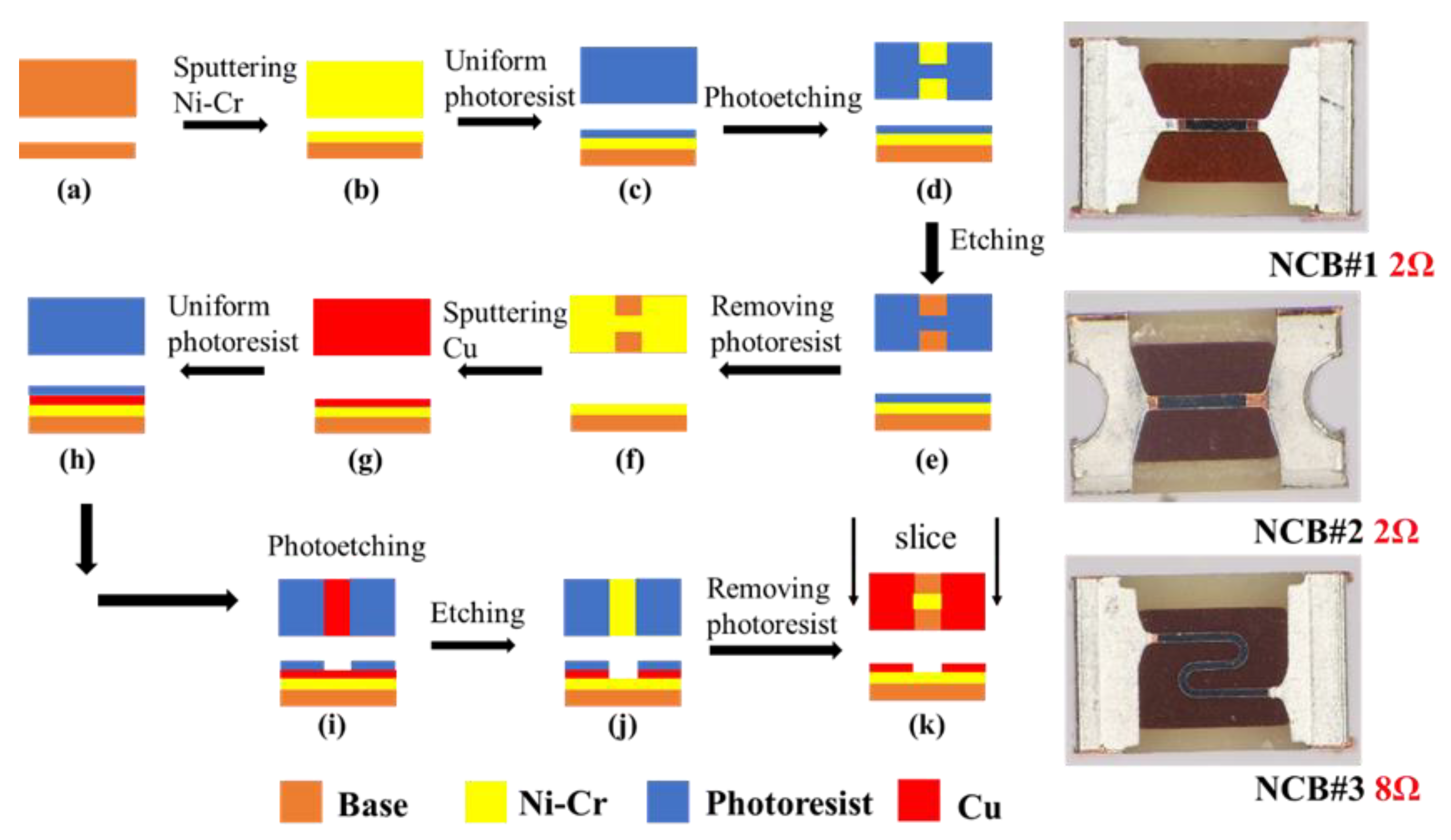


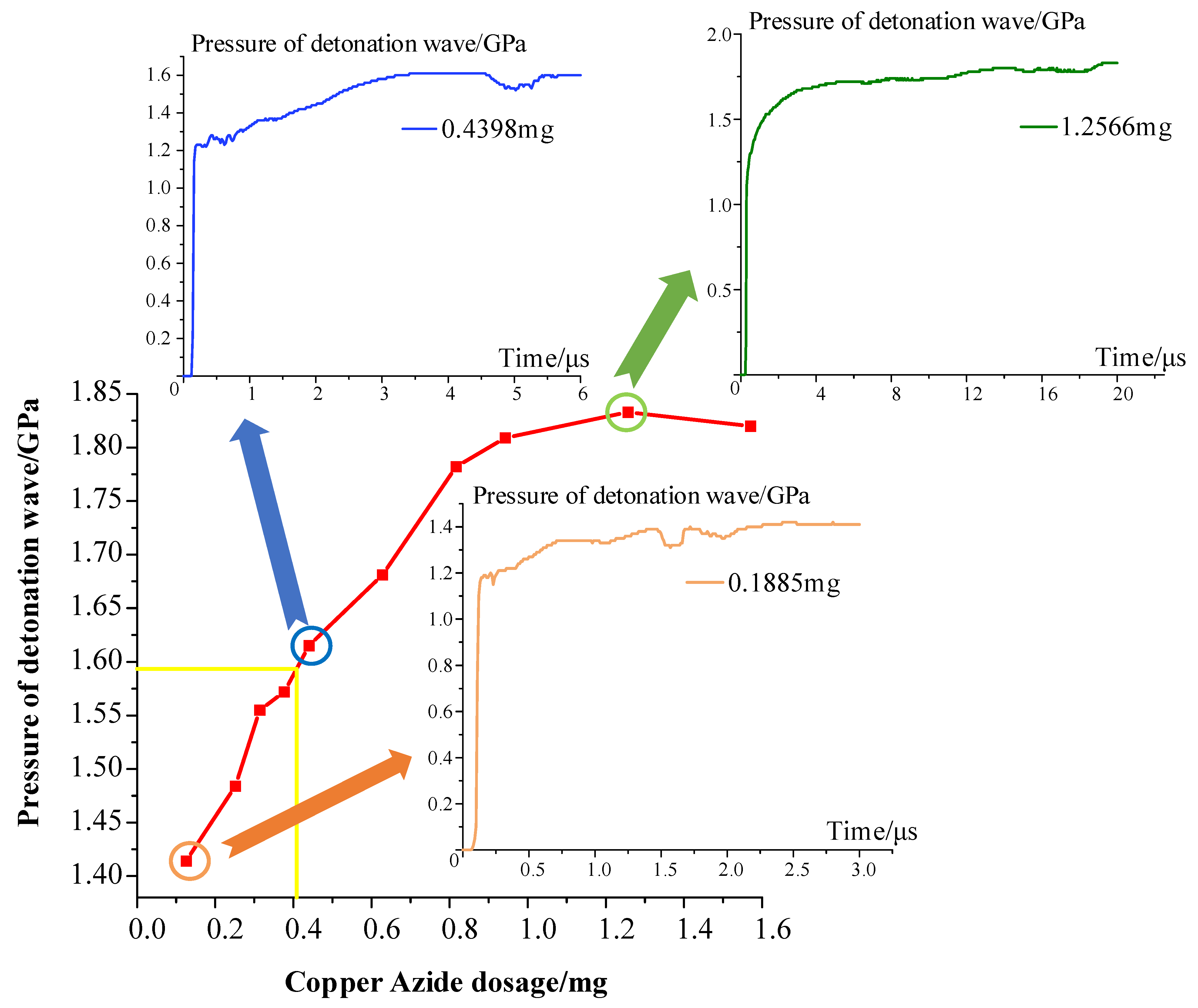
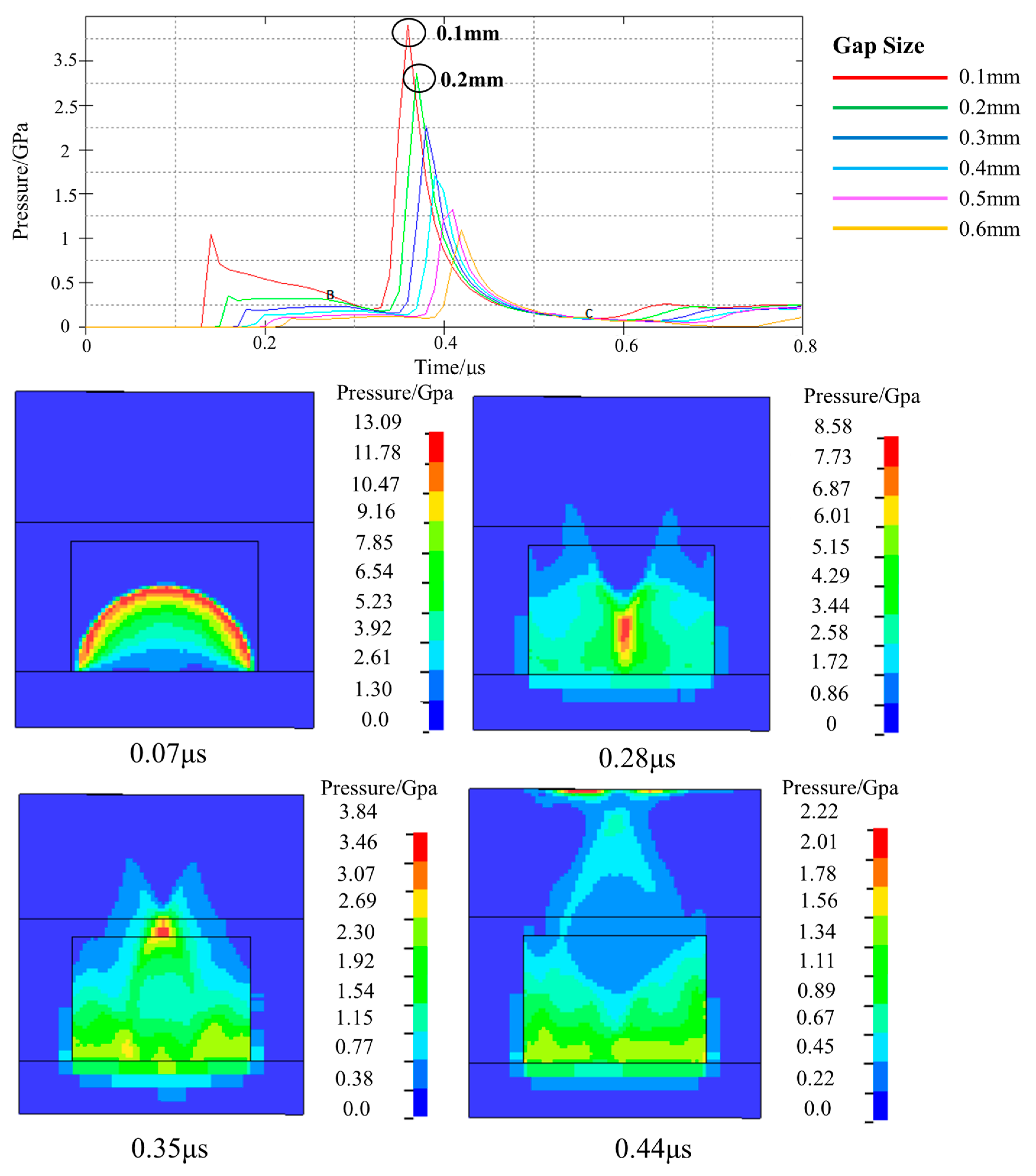
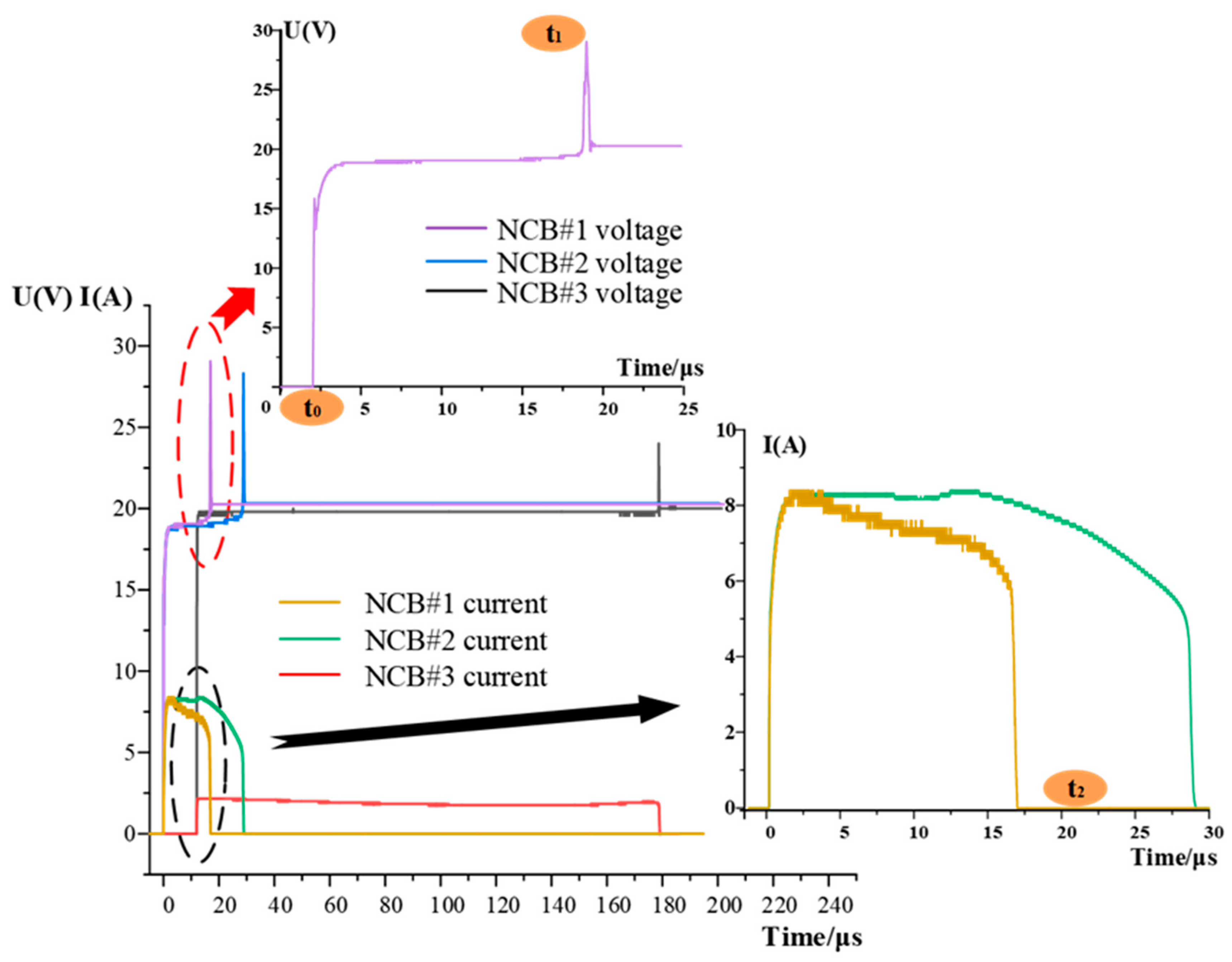
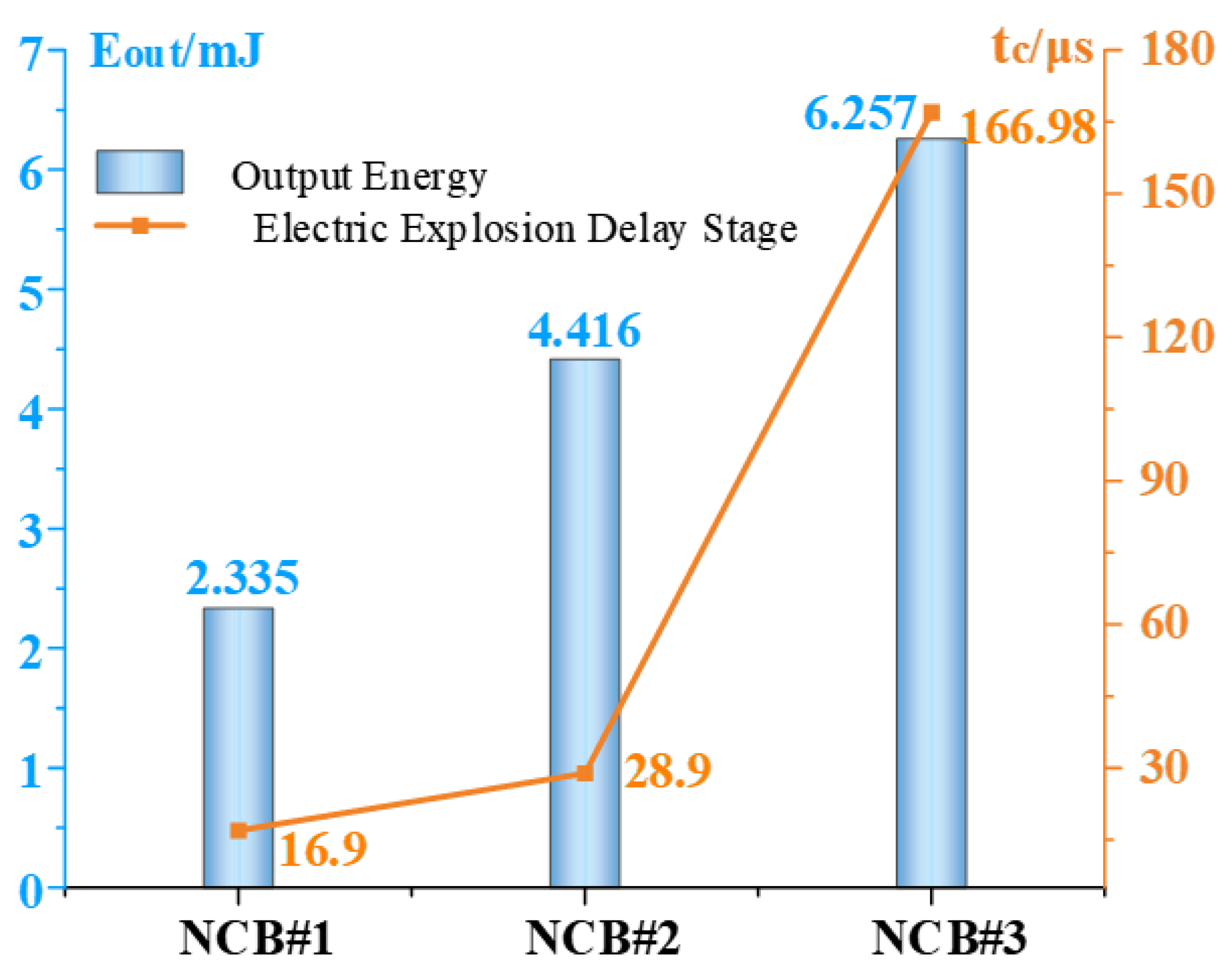
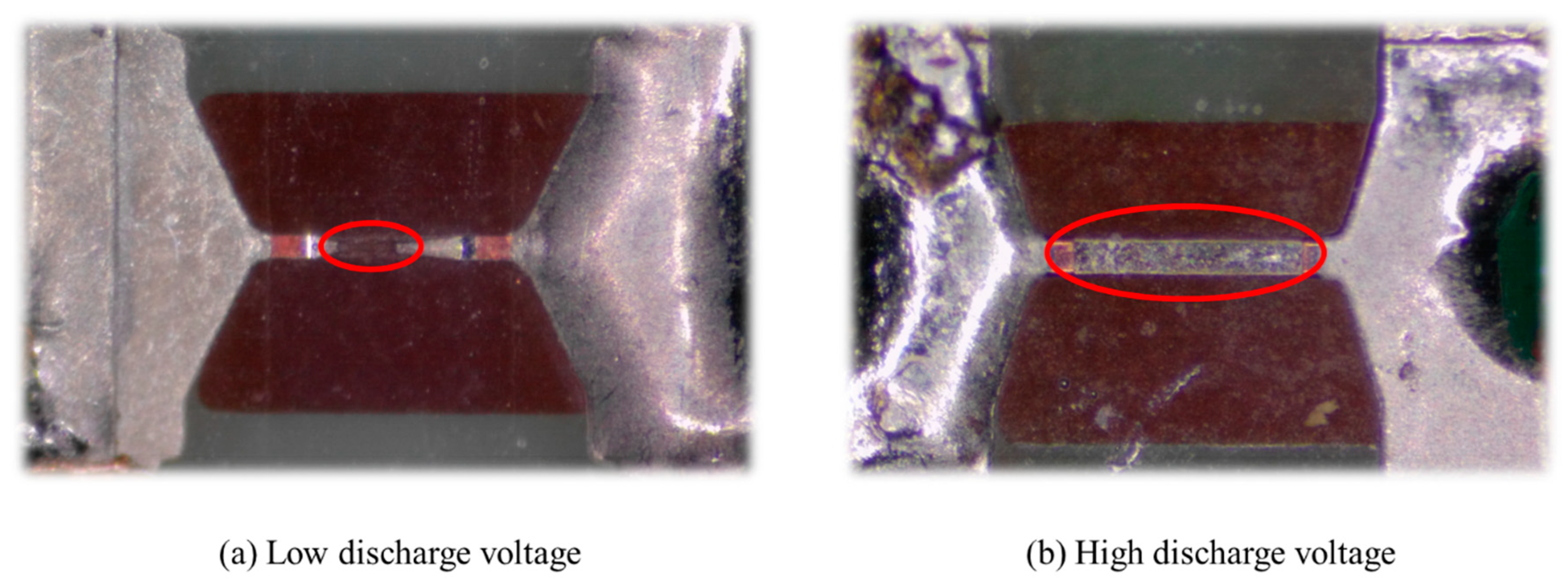
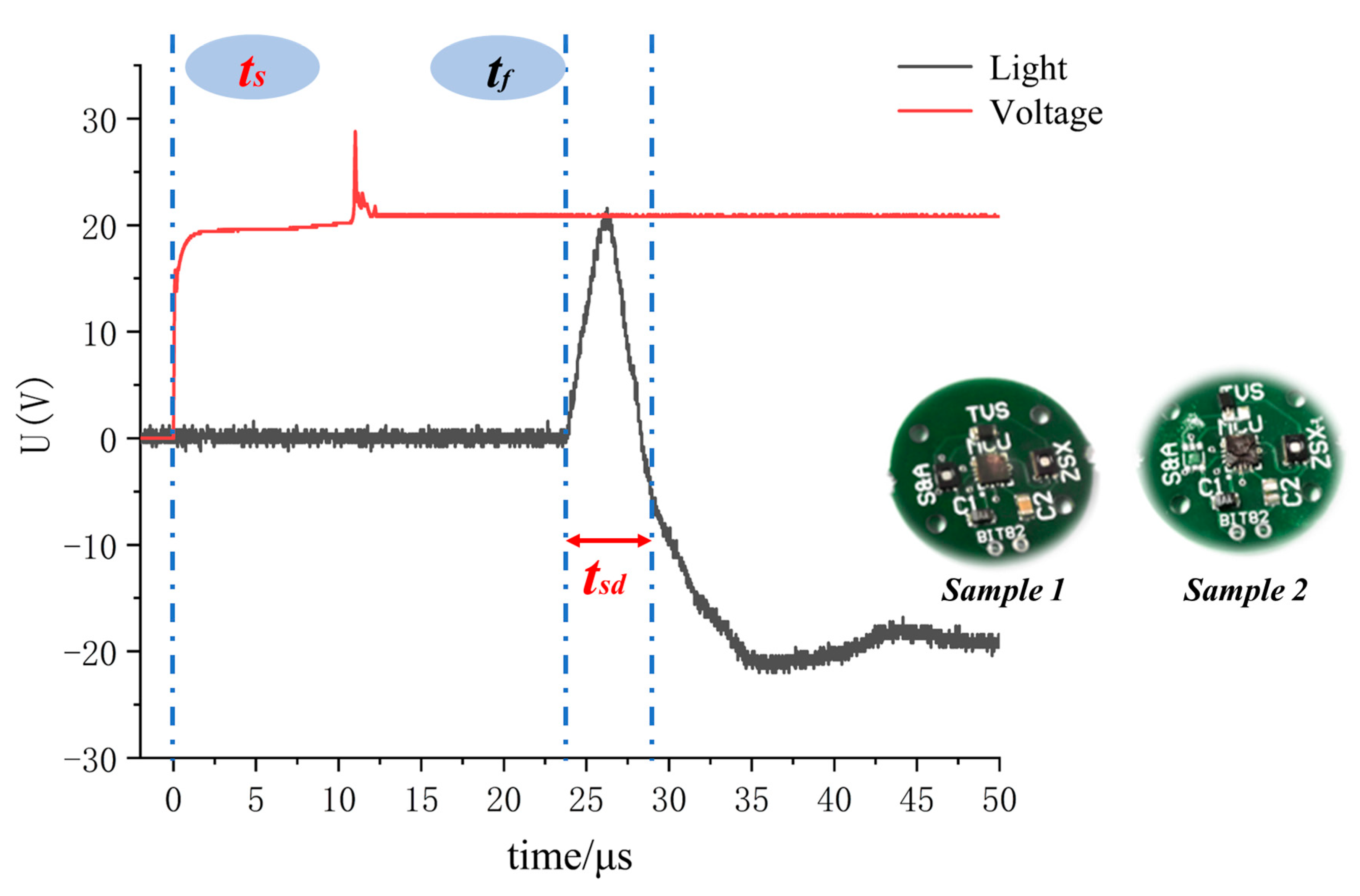
| Type of Self-Destruct Chip | Driven Conditions | Action Time |
|---|---|---|
| Biodegradable CMOS chip [9] | Not explained | Within 2 h |
| Explosive nano-energetic film [13] | Voltage: 20 V | Within 1 s |
| Nano-thermites [14,15,16,17] | Not explained | From milliseconds to tens of seconds |
| Explosive materials [18,19,20] | Capacitor discharge: 15 V 33 μF | Microsecond |
Disclaimer/Publisher’s Note: The statements, opinions and data contained in all publications are solely those of the individual author(s) and contributor(s) and not of MDPI and/or the editor(s). MDPI and/or the editor(s) disclaim responsibility for any injury to people or property resulting from any ideas, methods, instructions or products referred to in the content. |
© 2023 by the authors. Licensee MDPI, Basel, Switzerland. This article is an open access article distributed under the terms and conditions of the Creative Commons Attribution (CC BY) license (https://creativecommons.org/licenses/by/4.0/).
Share and Cite
Kan, W.; Ren, J.; Feng, H.; Lou, W.; Li, M.; Zeng, Q.; Lv, S.; Su, W. Research on Energetic Micro-Self-Destruction Devices with Fast Responses. Micromachines 2023, 14, 961. https://doi.org/10.3390/mi14050961
Kan W, Ren J, Feng H, Lou W, Li M, Zeng Q, Lv S, Su W. Research on Energetic Micro-Self-Destruction Devices with Fast Responses. Micromachines. 2023; 14(5):961. https://doi.org/10.3390/mi14050961
Chicago/Turabian StyleKan, Wenxing, Jie Ren, Hengzhen Feng, Wenzhong Lou, Mingyu Li, Qingxuan Zeng, Sining Lv, and Wenting Su. 2023. "Research on Energetic Micro-Self-Destruction Devices with Fast Responses" Micromachines 14, no. 5: 961. https://doi.org/10.3390/mi14050961
APA StyleKan, W., Ren, J., Feng, H., Lou, W., Li, M., Zeng, Q., Lv, S., & Su, W. (2023). Research on Energetic Micro-Self-Destruction Devices with Fast Responses. Micromachines, 14(5), 961. https://doi.org/10.3390/mi14050961






